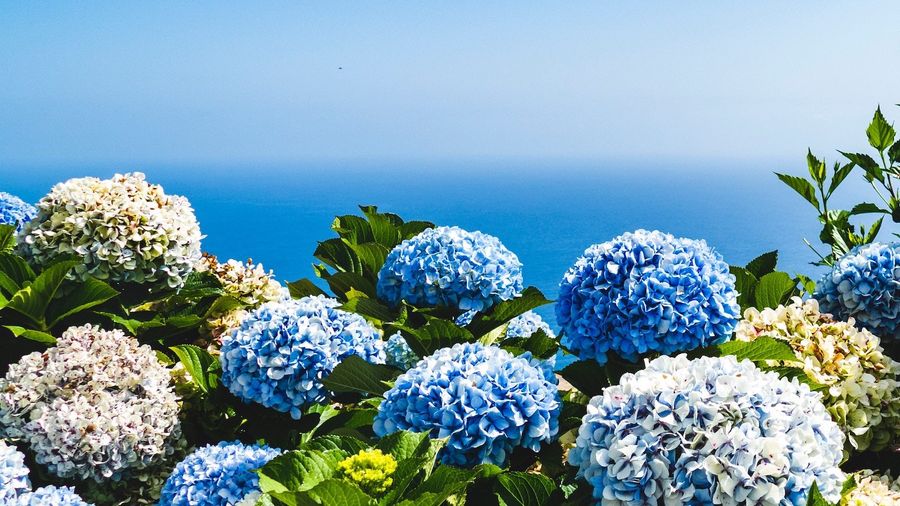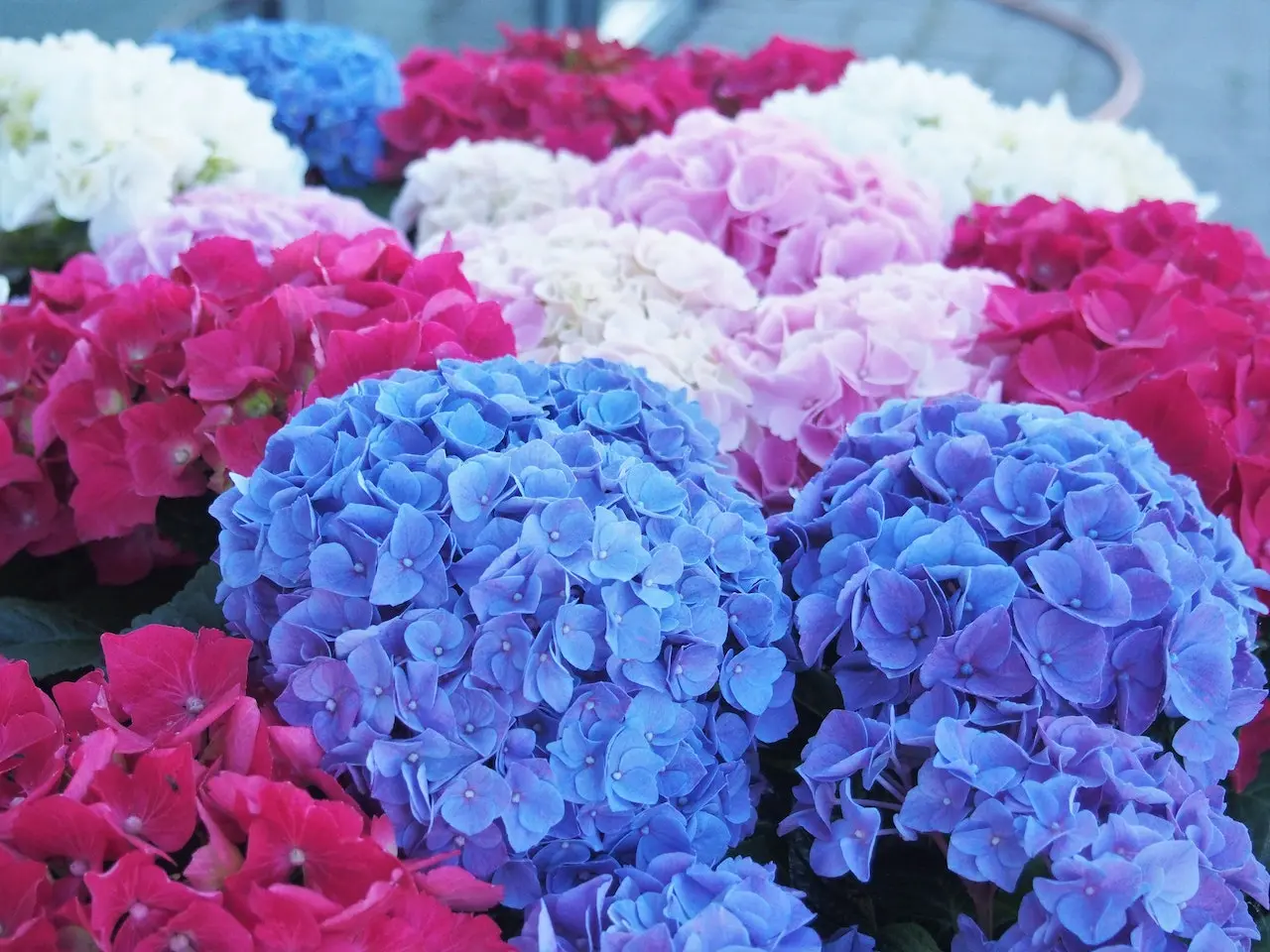· flowers · 4 min read
All About Hydrangeas
Hydrangeas are stunning flowering plants that are loved for their large, showy blooms and their ability to transform any garden or landscape into a colorful paradise.

Hydrangeas are stunning flowering plants that are loved for their large, showy blooms and their ability to transform any garden or landscape into a colorful paradise.
History of Hydrangeas
Hydrangeas have their origins in Asia, specifically Japan and Korea. They have been cultivated in these regions for centuries and are deeply ingrained in their cultural traditions. Hydrangeas were introduced to Europe and North America in the 18th century by explorers and botanists, and they quickly gained popularity as garden plants.
In Japan, hydrangeas hold significant cultural value and are often associated with gratitude, heartfelt emotions and even apology. They are commonly used in festivals, weddings, and religious ceremonies. In European and American gardens, hydrangeas are cherished for their large, showy blooms and their ability to thrive in various climates.
Types of Hydrangeas
Some popular types of hydrangeas include:
Bigleaf Hydrangea
This is the most common type of hydrangea, known for its large, rounded flower clusters. Bigleaf hydrangeas are available in two primary flower forms: mophead, which has large, ball-shaped clusters, and lacecap, which has flat, delicate flowers in the center surrounded by showy outer petals. They come in a range of colors, including pink, blue, purple, and white, with some varieties capable of changing color based on the soil pH.
Panicle Hydrangea
Panicle hydrangeas are characterized by their cone-shaped flower clusters. They are typically white when they bloom but may turn pink or even red as they mature. Panicle hydrangeas are hardy and can withstand a wide range of climates.
Smooth Hydrangea
Smooth hydrangeas are known for their large, round flower clusters and coarse, serrated leaves. The most well-known variety is the ‘Annabelle,’ which produces big, white flower heads. They are often used in cottage gardens and as cut flowers.
Oakleaf Hydrangea
Oakleaf hydrangeas have distinct oak-like leaves, which turn vibrant shades of red, orange, and purple in the fall. Their flowers are cone-shaped and typically white or pale pink. Oakleaf hydrangeas are prized for their attractive foliage and stunning fall colors.
Colors of Hydrangeas
Hydrangeas exhibit a remarkable range of colors, adding vibrancy and visual appeal to gardens and floral arrangements. The color of a hydrangea’s blooms is determined by several factors, including the presence of specific pigments in the flower petals and the pH level of the soil.

Pink
Pink hydrangea flowers are a classic and popular choice. They range from soft, pale pinks to deep, vibrant shades. Pink blooms are typically associated with femininity, grace, and romance.
Blue
Blue hydrangeas evoke a sense of tranquility and serenity. The color blue is often desired by gardeners and flower enthusiasts. Blue hydrangeas are unique because their color is influenced by the acidity of the soil. In acidic soil with a lower pH, aluminum becomes available to the plant, resulting in blue flowers.
White
White hydrangeas symbolize purity, innocence, and grace. They are often used in bridal bouquets, weddings, and formal occasions. White hydrangeas have a timeless and classic beauty that complements any garden or floral arrangement.
Green
Green hydrangeas are less common but have their own unique charm. They can range from pale, subtle green to vivid lime green. Green hydrangeas are often appreciated for their refreshing and soothing appearance, adding a touch of freshness to floral compositions.
Multi-Colored
Some hydrangeas exhibit multiple colors on the same flower head, creating a captivating and eye-catching display. These multi-colored hydrangeas can feature combinations of pink, blue, purple, or white, making each bloom a work of art.
Fun Facts about Hydrangeas
- The color of some hydrangea flowers can change based on the soil pH. Acidic soils produce blue flowers, while alkaline soils result in pink flowers. White hydrangeas remain white regardless of soil pH.
- Hydrangea flowerheads can vary significantly in size, ranging from small and delicate to large and showy, depending on the variety.
- Hydrangeas are long-lived plants that can thrive for many years with proper care. Some varieties can live for several decades.
- Hydrangeas are attractive to bees, butterflies, and other pollinators, making them beneficial for garden ecosystems.
- Hydrangeas are popular for dried flower arrangements due to their ability to retain their shape and color even after drying.
Hydrangeas are treasured for their stunning blooms, versatility in garden design, and rich history. Whether used in landscapes, floral arrangements, or at your next tea party, hydrangeas will add new life to their environment.